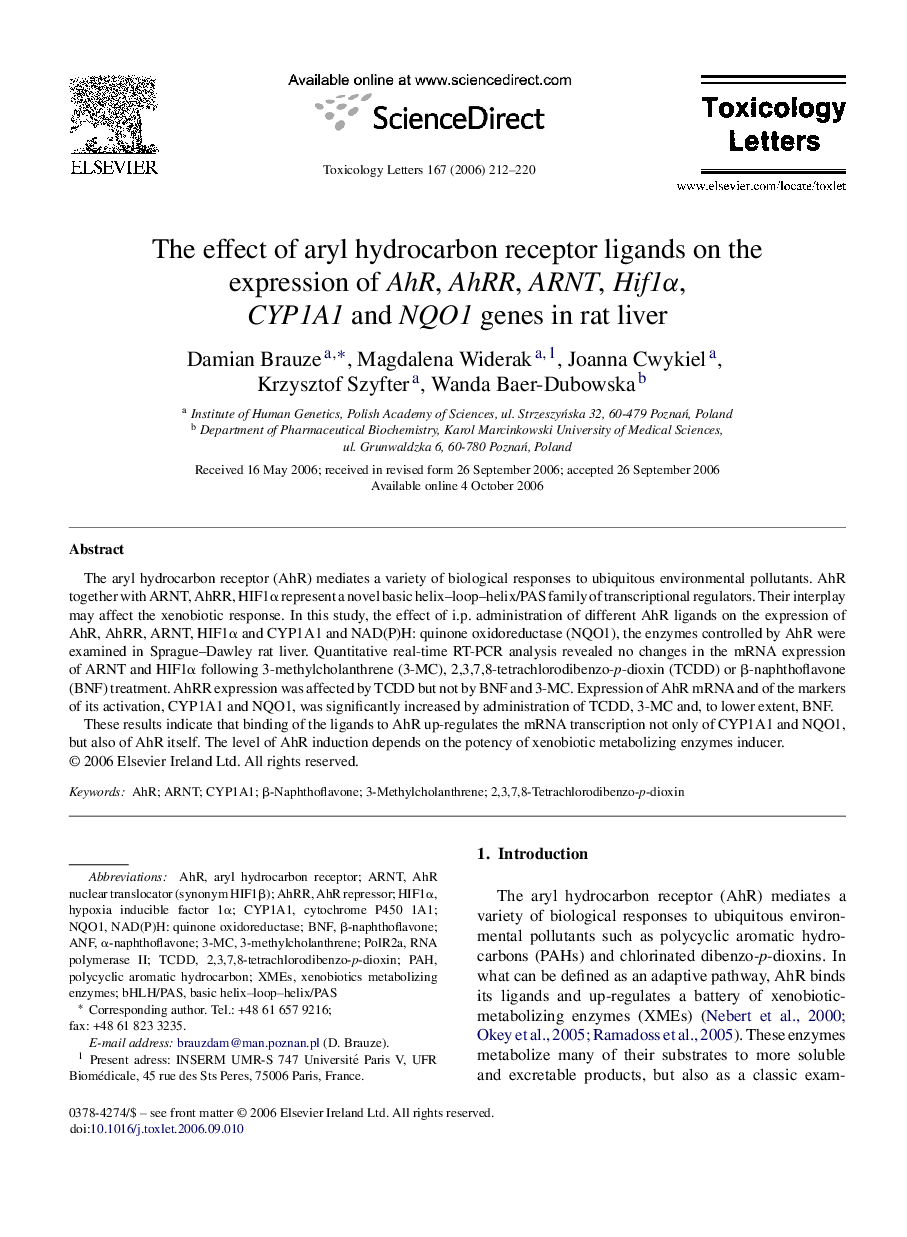| Article ID | Journal | Published Year | Pages | File Type |
|---|---|---|---|---|
| 2600977 | Toxicology Letters | 2006 | 9 Pages |
The aryl hydrocarbon receptor (AhR) mediates a variety of biological responses to ubiquitous environmental pollutants. AhR together with ARNT, AhRR, HIF1α represent a novel basic helix–loop–helix/PAS family of transcriptional regulators. Their interplay may affect the xenobiotic response. In this study, the effect of i.p. administration of different AhR ligands on the expression of AhR, AhRR, ARNT, HIF1α and CYP1A1 and NAD(P)H: quinone oxidoreductase (NQO1), the enzymes controlled by AhR were examined in Sprague–Dawley rat liver. Quantitative real-time RT-PCR analysis revealed no changes in the mRNA expression of ARNT and HIF1α following 3-methylcholanthrene (3-MC), 2,3,7,8-tetrachlorodibenzo-p-dioxin (TCDD) or β-naphthoflavone (BNF) treatment. AhRR expression was affected by TCDD but not by BNF and 3-MC. Expression of AhR mRNA and of the markers of its activation, CYP1A1 and NQO1, was significantly increased by administration of TCDD, 3-MC and, to lower extent, BNF.These results indicate that binding of the ligands to AhR up-regulates the mRNA transcription not only of CYP1A1 and NQO1, but also of AhR itself. The level of AhR induction depends on the potency of xenobiotic metabolizing enzymes inducer.
